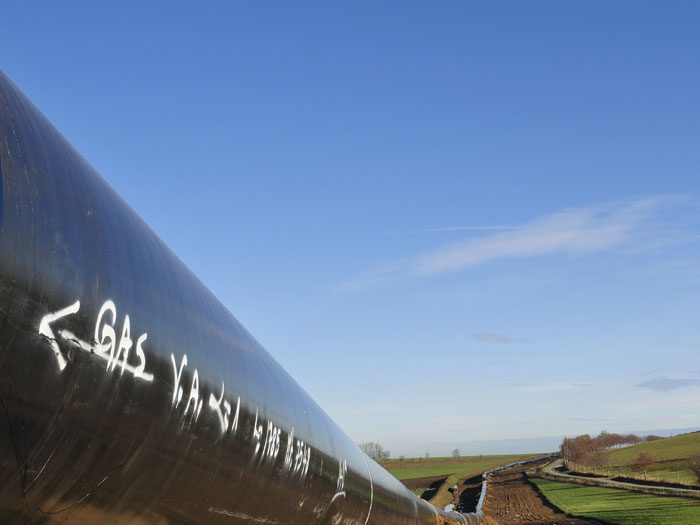Aging Pipelines Increase the Risk of Gas Explosions That Cost Millions; Luckily There’s an Insurance Solution

While the shale bonanza put the U.S. back on the global market as a major oil and gas producer, it is also straining the country’s aging pipeline infrastructure. Midstream companies are scrambling to get oil to market while at the same time dealing with recurring losses, some of them major headlines.
Recent pipeline incidents and plans to install thousands of miles of new lines across the country are attracting more scrutiny from regulators and communities. In some cases, lawsuits have led to settlements in the hundreds of millions of dollars and have led to cost increases and work stoppages on new projects.
Despite the challenges, experts said there’s a healthy insurance market for risk managers who provide underwriters with detailed information to demonstrate they are a superior risk.
Many Gas Pipelines More Than 50 Years Old
According to the American Gas Association, there are more than 2.5 million miles of pressurized gas pipelines across the United States. Deborah Hersman, former chairman of the National Transportation Safety Board and current chief executive of the National Safety Council, told Reuters that half of these gas pipelines in the country were installed before 1970.
At the same time, there’s growing demand for new pipeline to get product to market. Strong growth in the shale fields had boosted crude output by 16 percent in the U.S. in 2018 to 10.9 million barrels per day, more than Russia and Saudi Arabia. Volume is projected to rise another 11 percent in 2019 due to drilled wells in the Permian basin waiting to be tied into pipelines.
As operators lay new lines to serve the growing shale gas industry, they’re also trying to mitigate the risks of aging pipelines make of cast iron, wrought iron and bare steel which are susceptible to corrosion and cracking. There are roughly 300 “significant incidents” per year that cause at least $50,000 worth of damage, according to the Pipeline and Hazardous Materials Safety Administration.
While experts say the history of incidents is relatively low given the scope of gas lines in the United States, headline-grabbing incidents in recent have increased scrutiny.
In 2011, a fire in Allentown, Penn., a cracked cast-iron main installed in 1928 led to five deaths. In 2014, a gas explosion in New York City killed eight people and led to a $153 million settlement. And in 2018 dozens of people were injured, and one was killed in when natural gas fires ravaged dozens of homes in Northern Massachusetts.
One challenge escalating the situation and potential human impact is that pipelines laid a half-century ago in open areas are now sitting beneath heavily populated communities. Pipelines installed in open fields in the ’50s may now lay below thriving subdivisions, and in major cities such as New York, Philadelphia and Boston, pipeline replacement can be quite challenging and expensive.
“Some of these pipelines can end up in more high consequence areas than they were decades ago,” said Richard Blades, Chairman of Marsh’s U.S. Energy & Power Practice.
As regulators and communities question aging infrastructure, they’re also taking a more cautious look at replacements and lines. In mid-January 2019, a hearing officer at the Vermont Public Utilities Commission ordered an investigation of the state’s natural gas utility to determine if the 2-year-old, 41-mile line was installed properly. A rise in lawsuits has also led to work stoppages on a number of projects, including the 300-mile Mountain Valley Pipeline in Virginia.
Underwriters Want Detailed Information
Despite the perceived risks, the insurance market remains “very viable” for these companies with plenty of capacity to write the pipeline risk, said Blades. The most important thing is for risk managers to actively engage underwriters and explain in person why their firm is a superior risk and what differentiates them from other pipeline companies.
“You want the underwriter to have a comfort level with your risk and with you and the best way to get that pricing is to give them the data and detailed information they’re going to want,” Blades said.
Many underwriters are now drilling down on the causes of losses to identify the many variables, says Michael MacCrory, Managing Director at Marsh Wortham. They’re looking at not only the age of the pipelines but how operators maintain them and what replacement plans may be in order.
A study led by Stanford shows pipeline replacement programs can cut natural gas leaks by 90 percent. The Pipeline Safety, Regulatory, Certainty and Job Creation Act of 2011, called for the DOT to conduct state-by-state surveys on the process of cast iron pipeline replacement. While many utilities and cities across the U.S. are in the process of replacing lines, it takes money and time.
“It’s not just about age…It’s a dynamic situation where you are measuring and monitoring not only what your exposure is today but what it is going to be in the future,” MacCrory said.
Because pipeline operators are required to submit annual reports to the Pipeline and Hazardous Materials Safety Administration (PHMSA), operators often have valuable data by default. But risk managers need to do more than simply hand over reports to get the most favorable terms, Blades said.
“You need to pull out the highlighted data, demonstrate the key points and be ready to communicate that,” Blades said.
There are several things risk managers should be willing to discuss and they vary depending on whether the firm is in gathering, transmitting or distributing. This can include length of the pipe, diameter and how and when it crosses bodies of water.
And even for systems with aging pipelines, it can often come down to the length of pipeline and how it has been inspected, whether that be through hydraulic testing, smart pigs, or visual methods.
“There is ample capacity to insure pipeline risk. It’s about communicating your exposures, your maintenance budget, your plan and how you address the issues…Aging pipelines can still be a good risk if they have been maintained properly,” Blades said.












